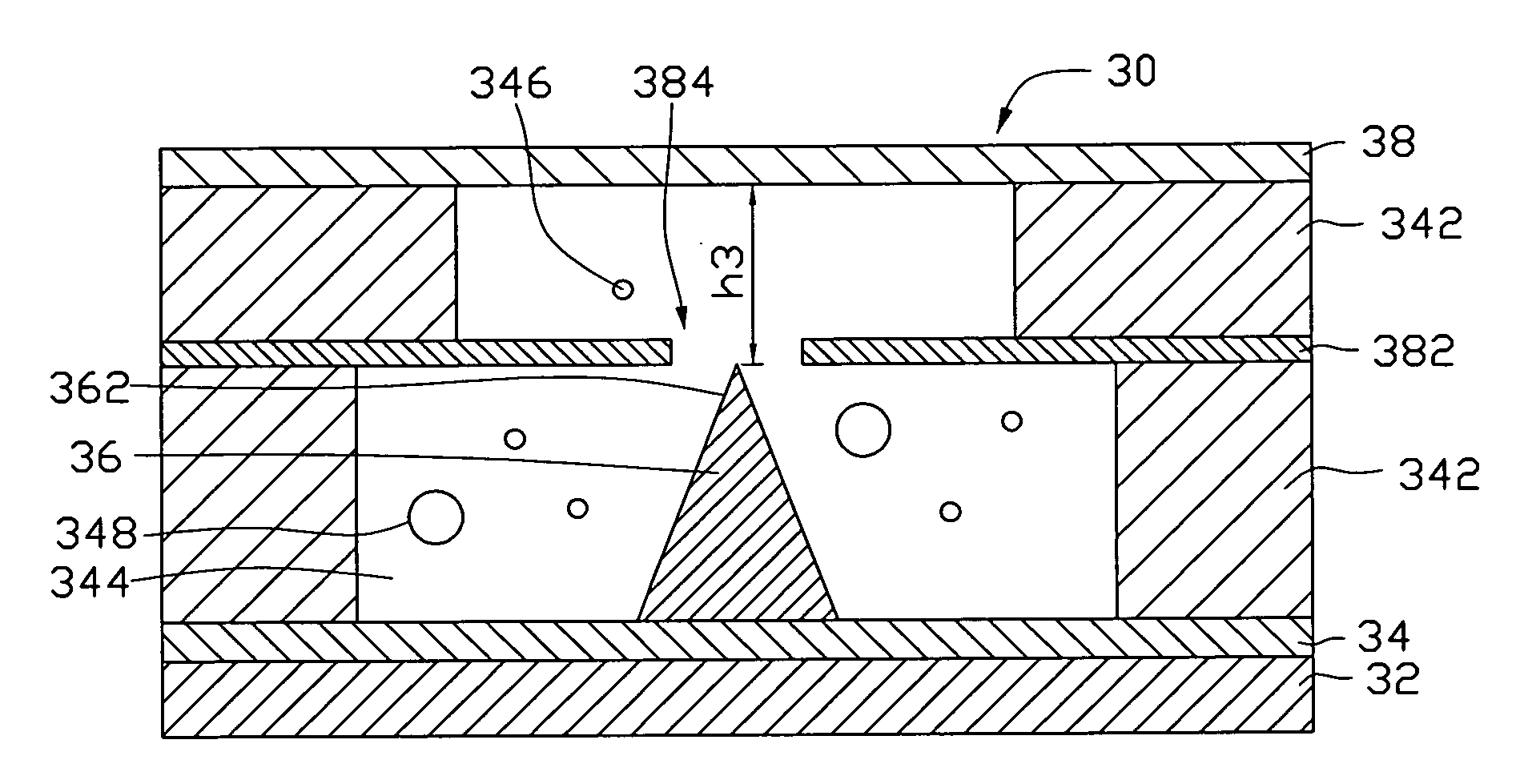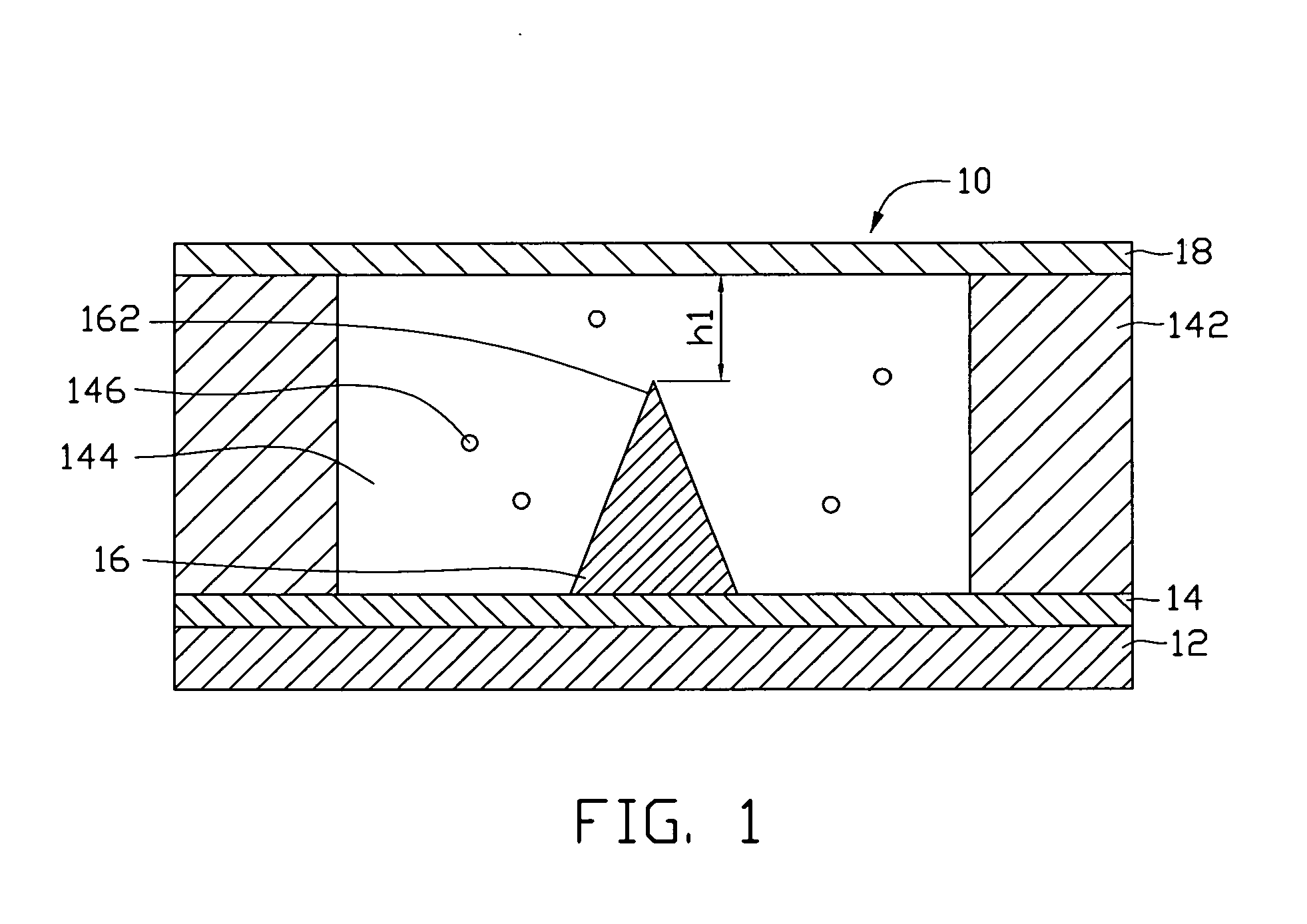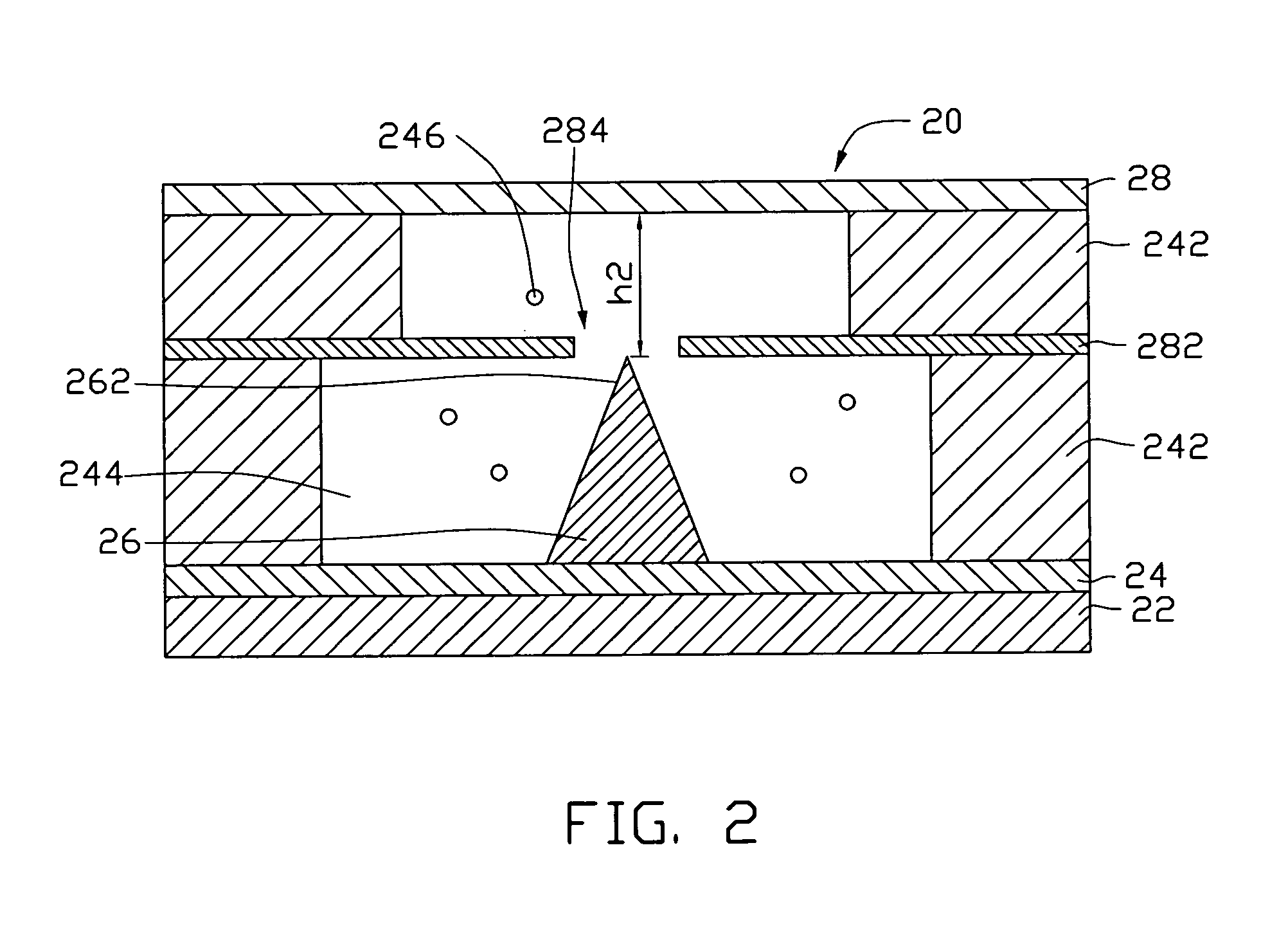Field emission microelectronic device
a microelectronic device and field emission technology, applied in the direction of discharge tube/lamp details, electric discharge tubes, electrical apparatus, etc., can solve the problems of large bulk and weight of conventional vacuum tubes, unstable performance of transistors, and potential damage,
- Summary
- Abstract
- Description
- Claims
- Application Information
AI Technical Summary
Benefits of technology
Problems solved by technology
Method used
Image
Examples
first embodiment
[0018]FIG. 1 shows a nano-scaled field emission electronic device 10, in accordance with the present device. As shown in FIG. 1, the nano-scaled field emission electronic device 10 is bipolar and includes a substrate 12, a cathode electrode 14, an emitter 16, and an anode electrode 18. The cathode electrode 14 is positioned on the substrate 12. The emitter 16 is located on and is electrically connected with the cathode electrode 14. The emitter 16 has an emission tip 162, and the emission tip 162 faces the anode electrode 18. A distance between the emission tip 162 of the emitter 16 and the anode electrode 18 is labeled as h1 and is named as a feature size (i.e., an emission distance) of the nano-scaled field emission electronic device 10. The anode electrode 18 is positioned apart from the cathode electrode 14, and an insulating layer 142 is located therebetween. This arrangement forms a sealed space 144 between the cathode electrode 14 and the anode electrode 18.
[0019]A plurality ...
second embodiment
[0030]Referring to FIG. 2, a nano-scaled field emission electronic device 20, in accordance with the present device, is shown. The nano-scaled field emission electronic device 20 is a triode and includes a substrate 22, a cathode electrode 24, an emitter 26, an anode electrode 28, and a gate electrode 282. The cathode electrode 24 is positioned on the substrate 22. The emitter 26 is located on and electrically connected with the cathode electrode 24. The emitter 26 has an emission tip 262, and the emission tip 262 faces the anode electrode 28. The anode electrode 28 is positioned apart (i.e., spaced) from the cathode electrode 24, and the gate electrode 282 is located between the anode electrode 28 and the cathode electrode 24. An insulating layer 242 is located between the anode electrode 28 and the gate electrode 282 and between the gate electrode 282 and the cathode electrode 24. This arrangement forms a sealed space 244 between the cathode electrode 24 and the anode electrode 28...
third embodiment
[0032]Referring to FIG. 3, a nano-scaled field emission electronic device 30, in accordance with the present device, is shown. The nano-scaled field emission electronic device 30 is a triode and includes a substrate 32, a cathode electrode 34, an emitter 36, an anode electrode 38, and a gate electrode 382. The cathode electrode 34 is positioned on the substrate 32. The emitter 36 is located on and is electrically connected with the cathode electrode 34. The emitter 36 has an emission tip 362, and the emission tip 362 faces the anode electrode 38. The anode electrode 38 is positioned apart from the cathode electrode 34, and the gate electrode 382 is located between the anode electrode 38 and the cathode electrode 34. An insulating layer 342 is located between the anode electrode38 and the gate electrode 382 and between the gate electrode 382 and the cathode electrode 34. This arrangement forms a sealed space 344 between the cathode electrode 34 and the anode electrode 38. A plurality...
PUM
 Login to View More
Login to View More Abstract
Description
Claims
Application Information
 Login to View More
Login to View More - R&D
- Intellectual Property
- Life Sciences
- Materials
- Tech Scout
- Unparalleled Data Quality
- Higher Quality Content
- 60% Fewer Hallucinations
Browse by: Latest US Patents, China's latest patents, Technical Efficacy Thesaurus, Application Domain, Technology Topic, Popular Technical Reports.
© 2025 PatSnap. All rights reserved.Legal|Privacy policy|Modern Slavery Act Transparency Statement|Sitemap|About US| Contact US: help@patsnap.com



